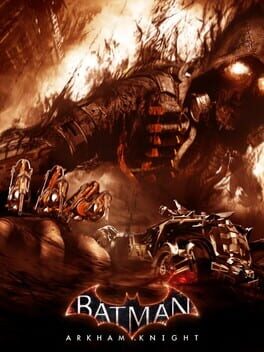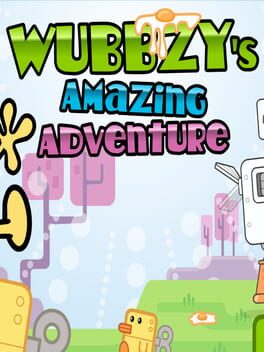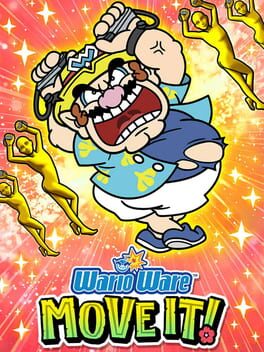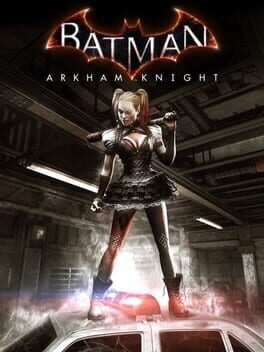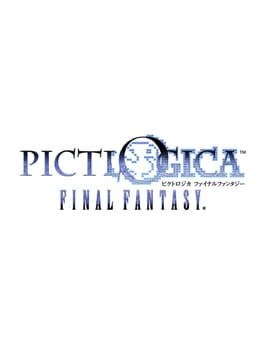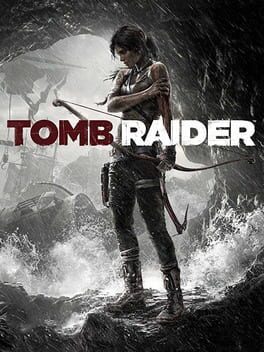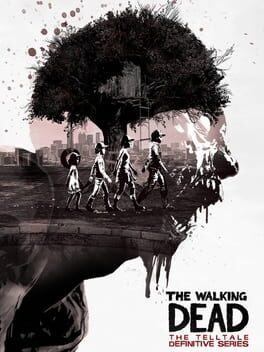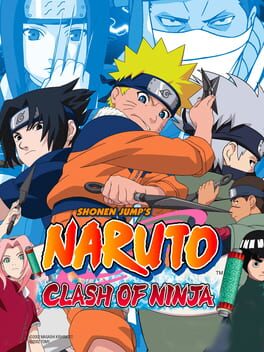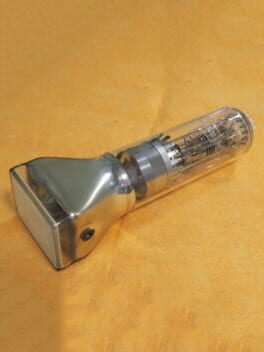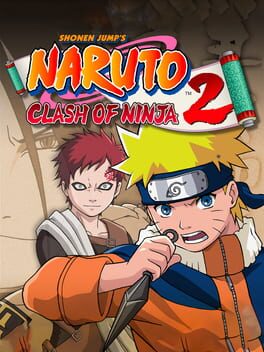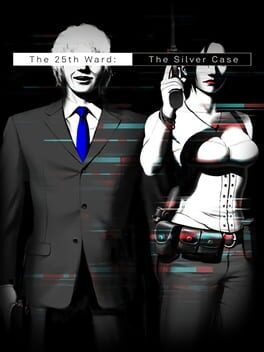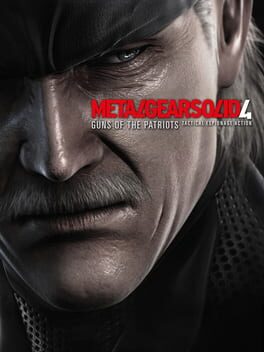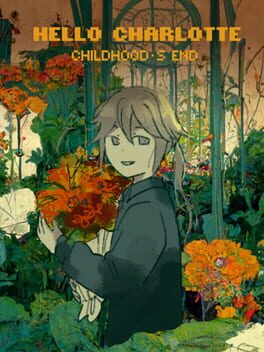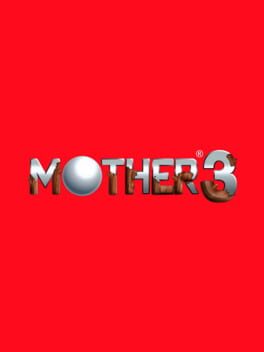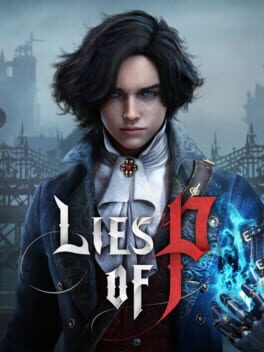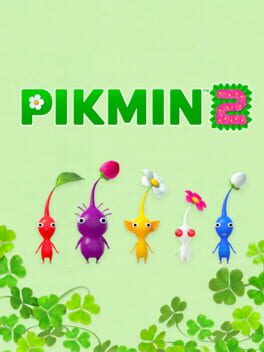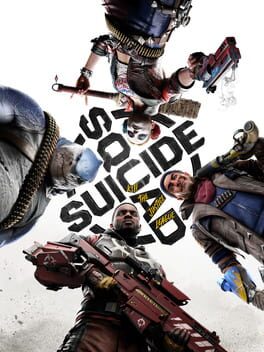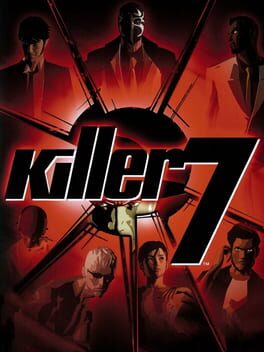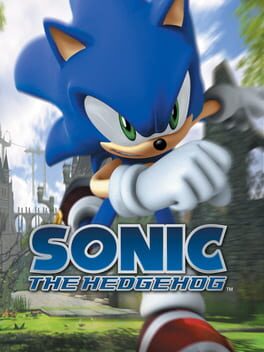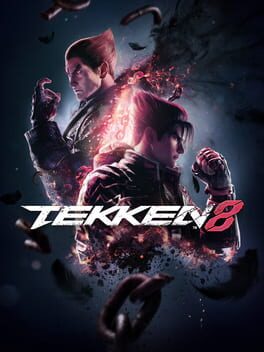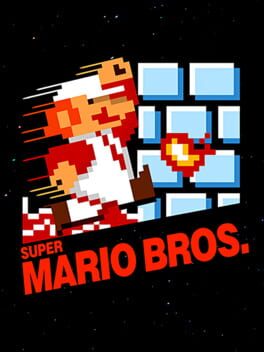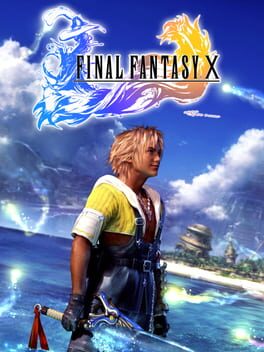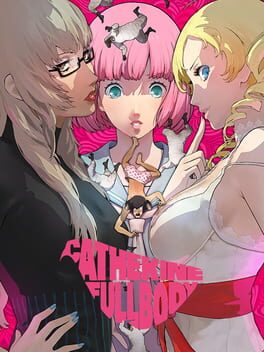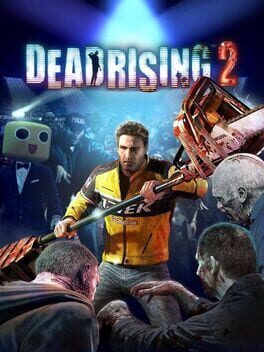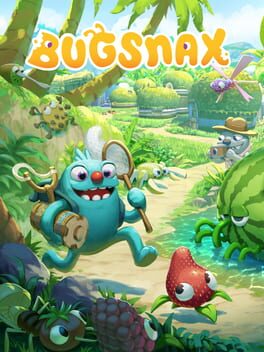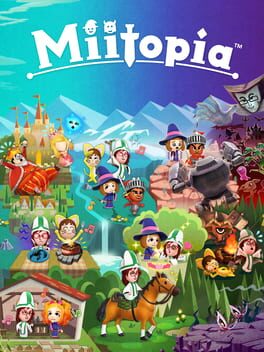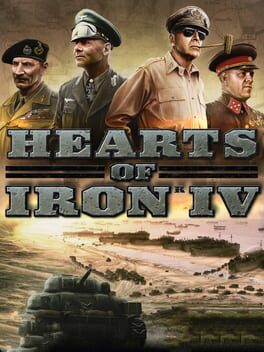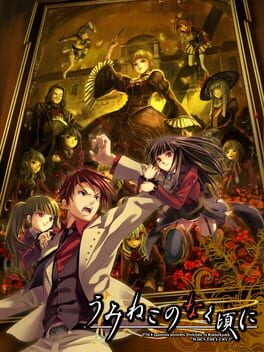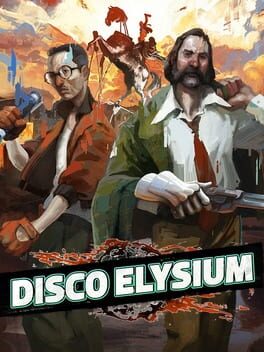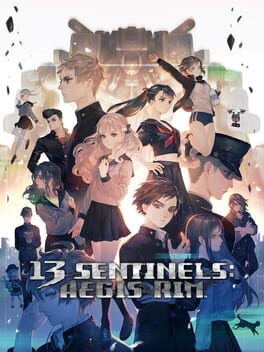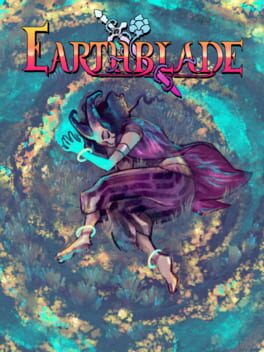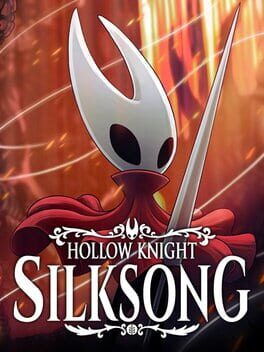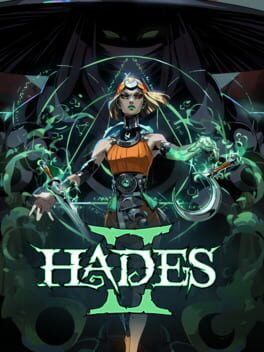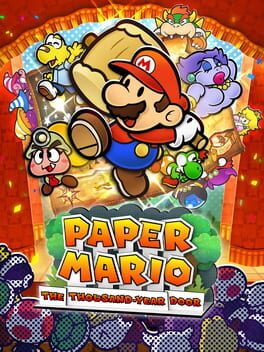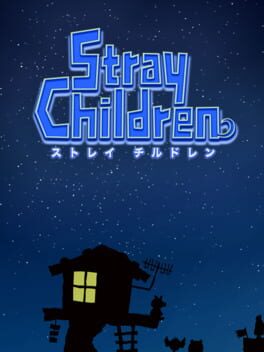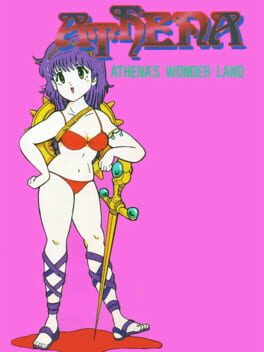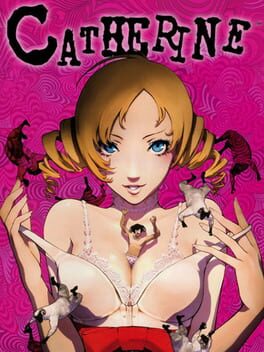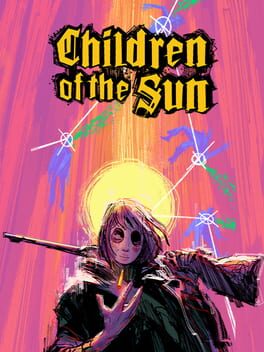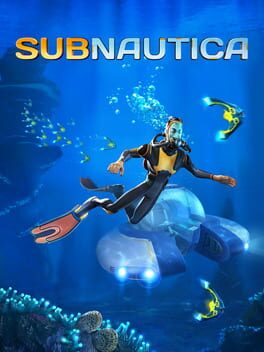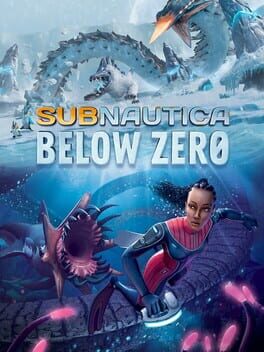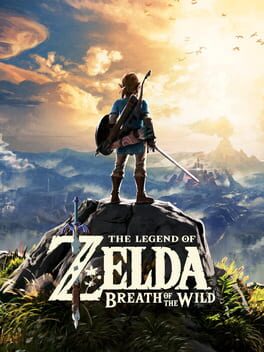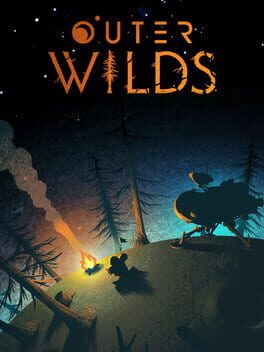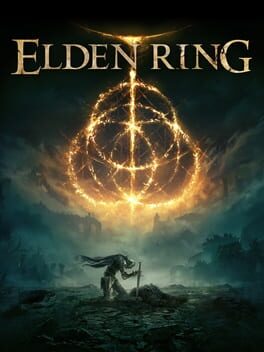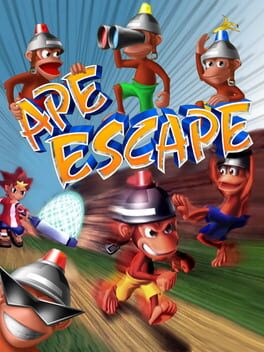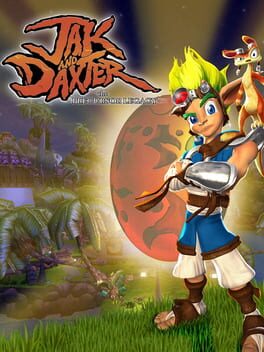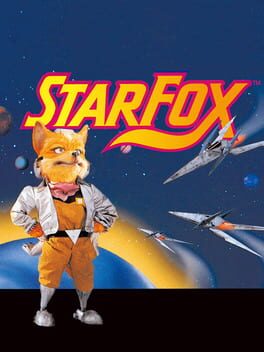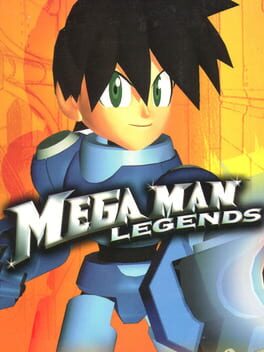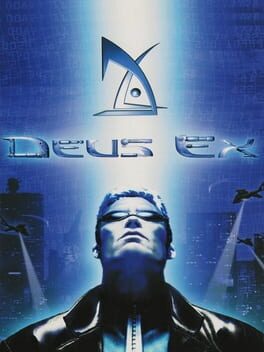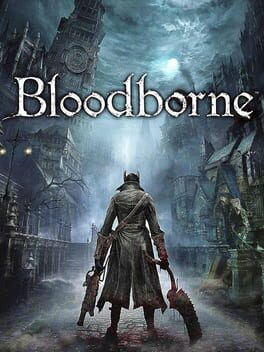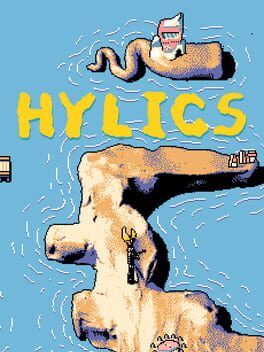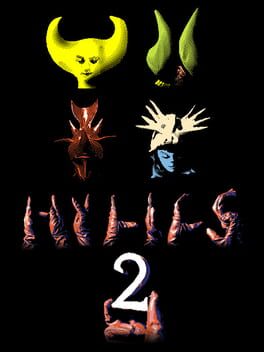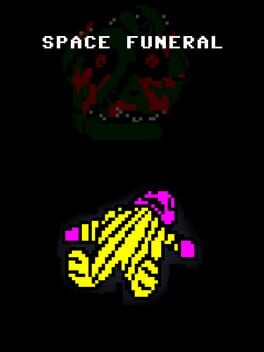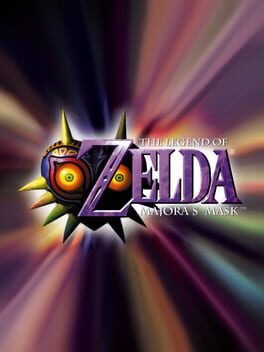zeroesandones
BACKER
3379 reviews liked by zeroesandones
When I played Arkham Knight for the first time eight and a half years ago, perhaps my greatest disappointment from the game was the lack of amazing Scarecrow segments that were famously in Arkham Asylum. Those scenes in the original game scared the crap out of me as a kid, and played with gaming conventions masterfully - it was the first time I remember a game taking advantage of the fourth wall, and with such phenomenal results. Arkham Knight mostly drops these. Yes, there's are fear toxin-fueled scenes of confusion like in Asylum, but they're all centered around the Joker and, with the exception of perhaps the last one, aren't horrific at all.
Where were the masterclass subversions of the first game? Couldn't there at least be some mind-altering scenes that change the setting like in Asylum?
Well, as it turns out, kind of? But with huge asterisks. DLC that was originally exclusive to the PS4 release of Arkham Knight, the "mind-altering scenes" just being Gotham on fire with a giant Scarecrow poking needles and having Superman's heat vision for some reason, and instead of being on foot as Batman, you're in the Batmobile, following a linear path through the fiery city until you reach a boss portion where you pump lead into Scarecrowzilla for a minute. It's simple stuff. Nothing like you would hope for from what came before or what was hyped up in advertising.
But disappointing things can still be fun, right? Well, kinda yeah. This isn't a must play DLC by any means, but if you enjoy playing with the Batmobile, I don't see why you wouldn't enjoy this, especially since you're serenaded by John Noble's sultry Scarecrow voice delivering his hardest lines that aren't anywhere in the main game.
If you choose to play on the Switch version of the game, just know that this is perhaps the most prone to crashing the Switch version gets. It's not gonna happen every time, but it can happen. Most people will be playing this on the PS4, though, I'm sure, in which case you should be fine.
Where were the masterclass subversions of the first game? Couldn't there at least be some mind-altering scenes that change the setting like in Asylum?
Well, as it turns out, kind of? But with huge asterisks. DLC that was originally exclusive to the PS4 release of Arkham Knight, the "mind-altering scenes" just being Gotham on fire with a giant Scarecrow poking needles and having Superman's heat vision for some reason, and instead of being on foot as Batman, you're in the Batmobile, following a linear path through the fiery city until you reach a boss portion where you pump lead into Scarecrowzilla for a minute. It's simple stuff. Nothing like you would hope for from what came before or what was hyped up in advertising.
But disappointing things can still be fun, right? Well, kinda yeah. This isn't a must play DLC by any means, but if you enjoy playing with the Batmobile, I don't see why you wouldn't enjoy this, especially since you're serenaded by John Noble's sultry Scarecrow voice delivering his hardest lines that aren't anywhere in the main game.
If you choose to play on the Switch version of the game, just know that this is perhaps the most prone to crashing the Switch version gets. It's not gonna happen every time, but it can happen. Most people will be playing this on the PS4, though, I'm sure, in which case you should be fine.
Does it actually deserve this high of a rating? Probably not, but I tell ya what, this was crack for us early zoomers before we had the smart phones or the TikToks.
Ok, obviously I'm speaking for a small minority of other early zoomers who played this game, but still. This stands out as being not only a nostalgia-fueled romp, but being... actually genuinely pretty good? You wouldn't expect a Nick Jr. show to have decently thought out platforming mechanics, good controls, and just generally good gameplay, but here it is. On top of that, the music is also surprisingly catchy, though is either mostly or fully taken from the show.
Yeah, this is mainly just appealing to me having grown up with it, but I think anyone who would give it a shot now wouldn't be upset with it. There are worse ways to spend ten minutes.
Ok, obviously I'm speaking for a small minority of other early zoomers who played this game, but still. This stands out as being not only a nostalgia-fueled romp, but being... actually genuinely pretty good? You wouldn't expect a Nick Jr. show to have decently thought out platforming mechanics, good controls, and just generally good gameplay, but here it is. On top of that, the music is also surprisingly catchy, though is either mostly or fully taken from the show.
Yeah, this is mainly just appealing to me having grown up with it, but I think anyone who would give it a shot now wouldn't be upset with it. There are worse ways to spend ten minutes.
WarioWare: Move It!
2023
I've beaten the main game but haven't touched the side content/multiplayer, so consider this a snap judgement review.
After WarioWare: Get It Together, I was somewhat worried about the future of WarioWare. Not that I wasn't expecting more games - GIT did well financially and critically - but what the series would become. That game was quite disappointing to me. The Switch with its Joy-Cons has such promise for a WarioWare game which is a series pretty known for showing all the little ways in which a Nintendo console can shine, but instead we got a game that didn't utilize the specialties of the Switch and instead had a gimmick which, in my opinion, made microgames less fun. On top of that, WarioWare Gold struck me with its fun, visually pleasant, and humorous cutscenes that were fully voice acted. Get It Together tossed this aside for in-game cutscenes that merely use character voice clips.
So imagine my delight when a new WarioWare is announced, not only returning to what I like about the series, but bringing back the cutscenes of Gold I love so much, and taking heavy notes from Smooth Moves, which is probably the best direction they could have gone. What you get is exactly what I wanted more or less: Smooth Moves with Gold's cutscenes, and taking full advantage of the console's unique controllers.
While the controls usually work great, there were a number of times where they simply wouldn't cooperate even though it seems like I was doing what was expected. A boss microgame where you cook steaks took me way too long because the game would just refuse to acknowledge me putting the controller down (this is possibly an error with my controller which is a whole other can of worms, but I've done little motion controls with these particular Joy-Cons, so I doubt it). Or a simple microgame where you lay down a food item with one hand and "cut" it with the other, it just would not register my chops. There's also the microgames that expect you to hold the right JC with your left hand and use its IR camera to pick up your right hand's motions; my hand must be messed up cause I physically am unable to do some of the motions/symbols I'm expected to (this is definitely a me thing, but I'm sure many other people out there have similar hand issues). Worst of all, though, is the game expecting you to have Joy-Con straps. I know these things came with the Switch and are packaged with Joy-Cons themselves, but unfortunately for me, I never keep them because games don't require them, and I almost always play in handheld. Until now, where you're (practically) required to have these separate accessories. You can trick the game and get past needing the straps, but it's obviously not ideal. There's not a ton of these games, but enough to be quite annoying when they show up.
The only other issue I have with this game is length. It's a maximum of three hours long (which I imagine you're breaking a lot or having a lot of issues if you're taking that long, no offense if that's you) which is pretty much no time. I can't say for sure yet since I haven't touched it, but there does seem to be a degree of side content - something WarioWare games shine in - I'm not sure how much, from what I've seen there doesn't look like a ton especially with one player, but it's there. If you're a long-time fan, the short game is nothing new and probably won't bother you, but new players might find this lacking, especially if you're paying full price.
Shoutout to the Nintendo-themed microgames this time around. Remember when they used to be nothing but NES games? This one has a microgame of a game from this year, that's awesome. I'd love for the Nintendo ones to focus on more recent games moving forward, though seeing ones like Mario Pinball Land and Super Mario 64 DS being represented is such a treat.
I suppose I'll mention Wario's new voice actor to end things off, Kevin Afghani (whose favorite food is sushi, according to the credits). This is probably a hot take, but personally I thought Charles Martinet's full-sentence Wario voice, as seen in WarioWare Gold, was... not his best. Love the guy and his voices, but I was kind of hoping for a new Wario voice, in all honesty, and Kevin does a great job. I'll be happy to hear more of his Wario performance.
anyway, i love mona warioware i hope she makes it into smash :)
After WarioWare: Get It Together, I was somewhat worried about the future of WarioWare. Not that I wasn't expecting more games - GIT did well financially and critically - but what the series would become. That game was quite disappointing to me. The Switch with its Joy-Cons has such promise for a WarioWare game which is a series pretty known for showing all the little ways in which a Nintendo console can shine, but instead we got a game that didn't utilize the specialties of the Switch and instead had a gimmick which, in my opinion, made microgames less fun. On top of that, WarioWare Gold struck me with its fun, visually pleasant, and humorous cutscenes that were fully voice acted. Get It Together tossed this aside for in-game cutscenes that merely use character voice clips.
So imagine my delight when a new WarioWare is announced, not only returning to what I like about the series, but bringing back the cutscenes of Gold I love so much, and taking heavy notes from Smooth Moves, which is probably the best direction they could have gone. What you get is exactly what I wanted more or less: Smooth Moves with Gold's cutscenes, and taking full advantage of the console's unique controllers.
While the controls usually work great, there were a number of times where they simply wouldn't cooperate even though it seems like I was doing what was expected. A boss microgame where you cook steaks took me way too long because the game would just refuse to acknowledge me putting the controller down (this is possibly an error with my controller which is a whole other can of worms, but I've done little motion controls with these particular Joy-Cons, so I doubt it). Or a simple microgame where you lay down a food item with one hand and "cut" it with the other, it just would not register my chops. There's also the microgames that expect you to hold the right JC with your left hand and use its IR camera to pick up your right hand's motions; my hand must be messed up cause I physically am unable to do some of the motions/symbols I'm expected to (this is definitely a me thing, but I'm sure many other people out there have similar hand issues). Worst of all, though, is the game expecting you to have Joy-Con straps. I know these things came with the Switch and are packaged with Joy-Cons themselves, but unfortunately for me, I never keep them because games don't require them, and I almost always play in handheld. Until now, where you're (practically) required to have these separate accessories. You can trick the game and get past needing the straps, but it's obviously not ideal. There's not a ton of these games, but enough to be quite annoying when they show up.
The only other issue I have with this game is length. It's a maximum of three hours long (which I imagine you're breaking a lot or having a lot of issues if you're taking that long, no offense if that's you) which is pretty much no time. I can't say for sure yet since I haven't touched it, but there does seem to be a degree of side content - something WarioWare games shine in - I'm not sure how much, from what I've seen there doesn't look like a ton especially with one player, but it's there. If you're a long-time fan, the short game is nothing new and probably won't bother you, but new players might find this lacking, especially if you're paying full price.
Shoutout to the Nintendo-themed microgames this time around. Remember when they used to be nothing but NES games? This one has a microgame of a game from this year, that's awesome. I'd love for the Nintendo ones to focus on more recent games moving forward, though seeing ones like Mario Pinball Land and Super Mario 64 DS being represented is such a treat.
I suppose I'll mention Wario's new voice actor to end things off, Kevin Afghani (whose favorite food is sushi, according to the credits). This is probably a hot take, but personally I thought Charles Martinet's full-sentence Wario voice, as seen in WarioWare Gold, was... not his best. Love the guy and his voices, but I was kind of hoping for a new Wario voice, in all honesty, and Kevin does a great job. I'll be happy to hear more of his Wario performance.
anyway, i love mona warioware i hope she makes it into smash :)
Harley Quinn is the most unique playstyle of all the characters in the Arkham series. Instead of sneaking around and taking down enemies from the shadows, she had no silent takedowns and instead can only take people down in ways that will alert every other enemy in the vicinity. On top of that, she has a special ability that puts her into a rage state, able to take out an enemy with the press of a button (for three or four enemies). Both of these together makes Harley a much more blitz approach to stealth, which can be a welcome change of pace.
It kind of stinks, though, that she's only really able to put this to the test in a DLC that takes no more than 20 minutes if you really take your time/struggle, otherwise only really being able to use her in maps that were clearly not made with her in mind. Her combat is also the most shallow of the lot. Her three gadgets are more or less clones of Batman's freeze grenade, explosive gel, and smoke pellets, and none of those are notably great in combat, so you're really just left with the bare necessities.
The story DLC is... not much to write home about. Harley goes to Blüdhaven to break Poison Ivy out of prison so she can join them in Scarecrow's plans to bring Gotham and Batman down, all the while she has Penguin in her ear. There's a lot of witty dialogue with Harley playing dumb (or... I think playing dumb? It's hard to tell with Arkham Harley) to Penguin, Penguin trying to get her to work with him or just insulting her, and Harley making various cop jokes, but it's none too special, really. The DLC ends with a fight against Nightwing which is actually pretty good and caps off the story well. I think it's hilarious that Harley canonically kicks Nightwing's ass.
Shame that they didn't even try to show Blüdhaven off at all. Not that it surprises me, especially with such a short story, but it all takes place within the police department, nary a glimpse of the city beyond. Oh well, it's kind of just Gotham 2 from what I know, so it's no big deal.
Overall, Harley is an appreciated addition to the Arkham cast when it comes to stealth, but lacking in combat, and it very much feels like she was not intended to be played outside of this very short story originally.
It kind of stinks, though, that she's only really able to put this to the test in a DLC that takes no more than 20 minutes if you really take your time/struggle, otherwise only really being able to use her in maps that were clearly not made with her in mind. Her combat is also the most shallow of the lot. Her three gadgets are more or less clones of Batman's freeze grenade, explosive gel, and smoke pellets, and none of those are notably great in combat, so you're really just left with the bare necessities.
The story DLC is... not much to write home about. Harley goes to Blüdhaven to break Poison Ivy out of prison so she can join them in Scarecrow's plans to bring Gotham and Batman down, all the while she has Penguin in her ear. There's a lot of witty dialogue with Harley playing dumb (or... I think playing dumb? It's hard to tell with Arkham Harley) to Penguin, Penguin trying to get her to work with him or just insulting her, and Harley making various cop jokes, but it's none too special, really. The DLC ends with a fight against Nightwing which is actually pretty good and caps off the story well. I think it's hilarious that Harley canonically kicks Nightwing's ass.
Shame that they didn't even try to show Blüdhaven off at all. Not that it surprises me, especially with such a short story, but it all takes place within the police department, nary a glimpse of the city beyond. Oh well, it's kind of just Gotham 2 from what I know, so it's no big deal.
Overall, Harley is an appreciated addition to the Arkham cast when it comes to stealth, but lacking in combat, and it very much feels like she was not intended to be played outside of this very short story originally.
So, having put more time into this game, I think I'm ready to give it an actual review. Although I'm only technically a third of the way done with it.
This is a mobile game put on the 3DS, which means it's one of those where you play a little, then are forced to wait for a certain amount of time to pass, rinse and repeat. At first, this was fine. A 30 minute wait and then an hour wait, and then a two hour wait... yeah, I don't like the waiting, but it's not too bad. But the farther you play, the longer the wait times are and there is no way around it with the eShop down. As of writing this, I was put on a 96 hour wait, and I imagine it'll only continue. It's just ridiculous, I've never seen a mobile game force you to wait so long for things (I don't really play mobile games, though) and I wouldn't really wanna pay to get past it, either. Cause even if I could, I'd just have another ten puzzles and then an even longer wait time.
And it's such a shame, too, because this could have been one of the best Picross games. I like having a mix of 10x10, 15x15, and 20x15 puzzles, plus this introduces a new kind of puzzle where you solve four 10x10s to reveal one large image. On top of all of that, there are three Micross boards (or "mosaic" if you've played other nonogram games) and I've always loved those.
What really sets this game apart from other Picross games is it being Final Fantasy. I don't just mean the puzzles and aesthetics are FF themed, but there's a whole new game mode here that more or less turns puzzles into a turn-based RPG. Loosely, at least. It seems like there's some strategy employed in this mode, and it might be up some peoples' alleys, but I couldn't really get too into it. Mostly because it's just doing a bunch of 5x5 puzzles with the stylus until you defeat the enemies. It seems kind of like a predecessor to Picross X, which is another game I haven't had much interest in because it's also entirely 5x5 puzzles. Seriously, this would be so much more fun to do with 10x10s.
So, I might come off as a hypocrite with all of this because I cite Pokémon Picross as my favorite Picross game, and that one also has typical mobile game trappings. Buuut I think that game has a lot of fun gimmicks, worthwhile challenges, I'm much more interested in Pokémon, and I shilled out the $25 for unlimited playtime way before the eShop shut down. I don't know if this is actually the case or not, but I also expect the times you're forced to wait aren't as bad, either. Even if they are, there's reason to play already-beaten puzzles there iirc.
I'm still gonna chip away at this game as I remember to, but I can't really recommend it even to Picross veterans unless they mod in unlimited play at some point. At least there's an English patch, not that it's super necessary for this game.
I'm also going to refrain from rating this game. I can't in good conscience give it the 5 stars I give Picross games in general, but I also don't really know what else to give it.
oh and they make you do mega picross which is cringe
This is a mobile game put on the 3DS, which means it's one of those where you play a little, then are forced to wait for a certain amount of time to pass, rinse and repeat. At first, this was fine. A 30 minute wait and then an hour wait, and then a two hour wait... yeah, I don't like the waiting, but it's not too bad. But the farther you play, the longer the wait times are and there is no way around it with the eShop down. As of writing this, I was put on a 96 hour wait, and I imagine it'll only continue. It's just ridiculous, I've never seen a mobile game force you to wait so long for things (I don't really play mobile games, though) and I wouldn't really wanna pay to get past it, either. Cause even if I could, I'd just have another ten puzzles and then an even longer wait time.
And it's such a shame, too, because this could have been one of the best Picross games. I like having a mix of 10x10, 15x15, and 20x15 puzzles, plus this introduces a new kind of puzzle where you solve four 10x10s to reveal one large image. On top of all of that, there are three Micross boards (or "mosaic" if you've played other nonogram games) and I've always loved those.
What really sets this game apart from other Picross games is it being Final Fantasy. I don't just mean the puzzles and aesthetics are FF themed, but there's a whole new game mode here that more or less turns puzzles into a turn-based RPG. Loosely, at least. It seems like there's some strategy employed in this mode, and it might be up some peoples' alleys, but I couldn't really get too into it. Mostly because it's just doing a bunch of 5x5 puzzles with the stylus until you defeat the enemies. It seems kind of like a predecessor to Picross X, which is another game I haven't had much interest in because it's also entirely 5x5 puzzles. Seriously, this would be so much more fun to do with 10x10s.
So, I might come off as a hypocrite with all of this because I cite Pokémon Picross as my favorite Picross game, and that one also has typical mobile game trappings. Buuut I think that game has a lot of fun gimmicks, worthwhile challenges, I'm much more interested in Pokémon, and I shilled out the $25 for unlimited playtime way before the eShop shut down. I don't know if this is actually the case or not, but I also expect the times you're forced to wait aren't as bad, either. Even if they are, there's reason to play already-beaten puzzles there iirc.
I'm still gonna chip away at this game as I remember to, but I can't really recommend it even to Picross veterans unless they mod in unlimited play at some point. At least there's an English patch, not that it's super necessary for this game.
I'm also going to refrain from rating this game. I can't in good conscience give it the 5 stars I give Picross games in general, but I also don't really know what else to give it.
oh and they make you do mega picross which is cringe
Tomb Raider
2013
Me using my Spider-Sense super powers that came pre-installed by being a white woman to try to save my friend Max Caulfield before she becomes the main character of a Fatal Frame story. I start my journey by survivng cartoonishly unlikely events that no real human being would live and never getting myself warmer clothes despite the frigid environment, and I'll also wave around my bow and arrow in extremely high winds during cutscenes despite having three guns. I might have useless, one-note friends that are either dicks to me or provide no assistance, but with my knowledge of the flashbacks in the TV drama Arrow and my personality of lightly buttered white bread, I can get through this.
Game was pretty fun.
Game was pretty fun.
I can't recommend this collection enough. While seasons 2 and 3 have their naysayers, I think they're pretty damn good and definitely worth playing, especially if you intend on experiencing the whole Walking Dead story. Personally, I loved all four main seasons of this series, and I thought Michonne was decent as a supplemental piece, although I wouldn't recommend it on its own.
Along with that, this collection comes with developer commentary for seasons 1-4. Unfortunately, I couldn't get it to work for whatever reason, so I can't say for sure how worthwhile it is (although I know the season 2 finale has a juicy cut content drop), but you can probably find them on YouTube if nothing else.
Anyway, I'm going to use this review to link to every review I made for each episode of each season, along with a link to my ranking of all the episodes as a whole. Each review includes some thoughts on the episodes, and the major choices I made (except S1E1, didn't have the idea to do that yet), why I made those choices, and the character relationship statuses seen at the end of season 3 and the end of each season 4 episode. This is probably gonna suck to type out, I really hope I don't fuck something up.
Oh - this should be obvious, but each review has spoilers for the episode!
Ranking of all episodes
Season 1, episode 1: A New Day
Season 1, episode 2: Starved For Help
Season 1, episode 3: Long Road Ahead
Season 1, episode 4: Around Every Corner
Season 1, episode 5: No Time Left
Season 1, DLC episode: 400 Days
Season 2, episode 1: All That Remains
Season 2, episode 2: A House Divided
Season 2, episode 3: In Harm's Way
Season 2, episode 4: Amid the Ruins
Season 2, episode 5: No Going Back
Season 3, episode 1: Ties That Bind - Part One
Season 3, episode 2: Ties That Bind - Part Two
Season 3, episode 3: Above the Law
Season 3, episode 4: Thicker Than Water
Season 3, episode 5: From the Gallows
Season 4, episode 1: Done Running
Season 4, episode 2: Suffer the Children
Season 4, episode 3: Broken Toys
Season 4, episode 4: Take Us Back
Michonne, episode 1: In Too Deep
Michonne, episode 2: Give No Shelter
Michonne, episode 3: What We Deserve
S4>S3>S1>S2>Michonne
Along with that, this collection comes with developer commentary for seasons 1-4. Unfortunately, I couldn't get it to work for whatever reason, so I can't say for sure how worthwhile it is (although I know the season 2 finale has a juicy cut content drop), but you can probably find them on YouTube if nothing else.
Anyway, I'm going to use this review to link to every review I made for each episode of each season, along with a link to my ranking of all the episodes as a whole. Each review includes some thoughts on the episodes, and the major choices I made (except S1E1, didn't have the idea to do that yet), why I made those choices, and the character relationship statuses seen at the end of season 3 and the end of each season 4 episode. This is probably gonna suck to type out, I really hope I don't fuck something up.
Oh - this should be obvious, but each review has spoilers for the episode!
Ranking of all episodes
Season 1, episode 1: A New Day
Season 1, episode 2: Starved For Help
Season 1, episode 3: Long Road Ahead
Season 1, episode 4: Around Every Corner
Season 1, episode 5: No Time Left
Season 1, DLC episode: 400 Days
Season 2, episode 1: All That Remains
Season 2, episode 2: A House Divided
Season 2, episode 3: In Harm's Way
Season 2, episode 4: Amid the Ruins
Season 2, episode 5: No Going Back
Season 3, episode 1: Ties That Bind - Part One
Season 3, episode 2: Ties That Bind - Part Two
Season 3, episode 3: Above the Law
Season 3, episode 4: Thicker Than Water
Season 3, episode 5: From the Gallows
Season 4, episode 1: Done Running
Season 4, episode 2: Suffer the Children
Season 4, episode 3: Broken Toys
Season 4, episode 4: Take Us Back
Michonne, episode 1: In Too Deep
Michonne, episode 2: Give No Shelter
Michonne, episode 3: What We Deserve
S4>S3>S1>S2>Michonne
Happy Leap Day everyone! Er, what does this have to do with Leap Day? Uh... there's a big froggy
This is a game I grew up playing, and even back then I knew this was such a small package. The main story of this game can be beaten in 10-20 minutes due to it only covering the Land of Waves arc of the series, and a very abridged version at that. You have one fight against all the characters in the game (except Naruto, since you play as him), with fully voice acted cutscenes of the characters' PNGs moving around; simple, but charming.
Besides the main story, the main feature is the one player mode in which you, again, fight each character of the game, just without any sort of story. Doing so with each character unlocks their bio which taught me that Naruto is a Libra. Apparently if you do the One Player mode with every character twice, something is unlocked with Naruto and Kakashi... but I'm not doing that, I'm sorry. It wouldn't really take that long in the grand scheme of things, but this game got outclassed in the same year it came out, no less twenty-one years later. I also don't even actually know if that unlocks anything. Since this game was outclassed so fast, information is limited.
Oh yeah, apparently this game and Clash of Ninja 2 came out in the same year? In Japan, this one came out in April 2003, while the sequel came out in December 2003. Even in NA, this one released in March 2006, and 2 in September 2006. That's so crazy to me. I can't even think of how or why that happened.
Even though I did play this as a kid and am nostalgic for it, I remember Clash of Ninja 2 much more. And from what I recall and have heard, there's really no reason to not just jump straight to that one. It also covers the Land of Waves arc (with a new kind of battle, too), and goes beyond that to possibly the most well-known arc of the series, the Chunin Exams.
It might be weird to give this three and a half stars given all that I've said has been a bit negative, but just because there's not much reason to play a game doesn't mean it's bad, yeah? I find the gameplay to be shallow, but quite fun, and there's a quaint feel to it all. Like I said, I grew up with the show, more specifically the English dub, so the voices, quotes, settings, music, graphics.... it all just feels so comfortable to me.
Edit: Everyone is calling this a button masher 😭 I actually tried to use some strategy. Am I stupid?
This is a game I grew up playing, and even back then I knew this was such a small package. The main story of this game can be beaten in 10-20 minutes due to it only covering the Land of Waves arc of the series, and a very abridged version at that. You have one fight against all the characters in the game (except Naruto, since you play as him), with fully voice acted cutscenes of the characters' PNGs moving around; simple, but charming.
Besides the main story, the main feature is the one player mode in which you, again, fight each character of the game, just without any sort of story. Doing so with each character unlocks their bio which taught me that Naruto is a Libra. Apparently if you do the One Player mode with every character twice, something is unlocked with Naruto and Kakashi... but I'm not doing that, I'm sorry. It wouldn't really take that long in the grand scheme of things, but this game got outclassed in the same year it came out, no less twenty-one years later. I also don't even actually know if that unlocks anything. Since this game was outclassed so fast, information is limited.
Oh yeah, apparently this game and Clash of Ninja 2 came out in the same year? In Japan, this one came out in April 2003, while the sequel came out in December 2003. Even in NA, this one released in March 2006, and 2 in September 2006. That's so crazy to me. I can't even think of how or why that happened.
Even though I did play this as a kid and am nostalgic for it, I remember Clash of Ninja 2 much more. And from what I recall and have heard, there's really no reason to not just jump straight to that one. It also covers the Land of Waves arc (with a new kind of battle, too), and goes beyond that to possibly the most well-known arc of the series, the Chunin Exams.
It might be weird to give this three and a half stars given all that I've said has been a bit negative, but just because there's not much reason to play a game doesn't mean it's bad, yeah? I find the gameplay to be shallow, but quite fun, and there's a quaint feel to it all. Like I said, I grew up with the show, more specifically the English dub, so the voices, quotes, settings, music, graphics.... it all just feels so comfortable to me.
Edit: Everyone is calling this a button masher 😭 I actually tried to use some strategy. Am I stupid?
After the disappointment of a sequel Dragon Ball Z: Budokai 2 was, I needed something to cleanse the palette, so I went with something I had prior experience with and knew was good - Naruto: Clash of Ninja 2. I grew up playing the first two Clash of Ninja games, at first as frequent rentals, and then I later owned one of them (I think it was the first one but I don’t remember for sure), so I already knew I was going to be into this one, especially because I already enjoyed the first one in my recent replay despite its brevity and lack of general content.
Clash of Ninja 2 is an improvement in almost every way. A story mode that’s over double the length and lets you play as different characters than just Naruto, a new kind of battle, more stages, and many more characters.
Before hopping into the positives, I wanna mention the only thing that got worse between games, even if it’s not a big deal: cutscene presentations. The first game had cutscenes where portraits of the characters would be talking to each other, turning, moving around, and making dynamic facial expression while the story progressed. It’s still mostly the same, but instead of the characters’ entire upper halves being shown, instead it’s just headshots. It’s a small change that doesn’t really matter (especially if you’re familiar with the series - just skip the cutscenes), but it oversimplified the already simple cutscenes of the first game, and I’m not really sure why.
Speaking of the story, it simply goes from the Land of Waves arc through the Chunin Exams arc, so basically the only first two arcs, though the Chunin Exams is a pretty long one. There’s no frills - if anything, it leaves things out, so there’s not much point talking about it. If you’ve not watched or read Naruto, this likely won’t impress you, but if you’re familiar, it’s a fun review. Because the Chunin Exams arc is so much longer than Land of Waves, this story mode is easily the meatier experience of the two games, it would have been twice the length only doing the latter story.
The gameplay here is pretty exactly the same as last time. In fact, I really don’t think anything has changed, just that more characters were added. You won’t hear me complaining about that, though, because I felt the first game’s gameplay was great as it was. It’s not gonna be as deep as actual fighting games, and I’ve heard other people refer to this as a “button masher” in fact, but I kind of resent that notion. There are legitimate combos and strategies at play here. You can get away with mashing in some cases, but if you actually take some time to learn the game and characters, you’ll have a much better time.
This game includes quite a few more characters, and most of them I found to be quite fun. The first game had 9 unique characters with one unlockable clone. This game has 20 unique fighters, two unlockable forms, and what’s pretty much an Echo fighter; two characters are pretty much just joke characters, but they’re treated just the same as the main cast. A whole lot more to work with, and with the variety of playable characters and opponents, I felt much more compelled to do as much as possible. I played the one player arcade mode with every character I unlocked, and even gave a whack at the Time Attack and Survival modes. Hell, I wanted to continue until I had unlocked everything because there really is so much more to unlock. The problem is that it just becomes really grindy. To unlock everything, you need in game money. To get in game money, you need to grind out battles. Obviously they don’t expect you to sit there all day and raise up money, but that’s my only real option. I decided to throw in the towel when the next character I needed to unlock cost $15,000 and I knew there were still two others that cost way way more - $50,000 and $100,000. Geez! - and you just simply do not raise money fast enough for me to want to do that. On top of that, I still had seven stages to buy, and more story mode chapters! And a bunch of less-important stuff.
Speaking of, you’re able to buy extra chapters for the story mode after beating the main mode. I only bought one of them. It was pretty basic, and they don’t seem all too crazy, but it’s neat that it’s there.
Man, I wish I kept track of memory cards as a kid. Maybe one day I would have unlocked everything, but as an adult now, there’s simply too much without a fast enough way to unlock it all. Yeah, I could probably cheat it, but I also don’t care enough.
In the end, I highly recommend this game to Naruto fans, or to people who like simple fighting games. I like this one a lot.
I didn’t really give too much time to each character besides Naruto himself, but I’d probably say my main is Shikamaru. Oh, and I don’t really know where to put these, so I’ll toss them here, here are some small details I really liked:
-You can play as Kankuro’s puppet, Karasu (or “Crow” as the game titles him), by itself in this game. But Kankuro is still controlling him, you can see the chakra connective lines the whole time, and Kankuro hangs out in the backgrounds of stages.
-All characters simply block attacks when holding away with the exception of Shikamaru. He’s unique in that he’ll do dodging animations; though it’s functionally the same as a block.
-Akamaru is one of the two joke characters of the game, being just a puppy. When you use the substitution jutsu with him to get out of a combo, instead of a log appearing in his place, a bone will show up, it’s a cute detail.
Clash of Ninja 2 is an improvement in almost every way. A story mode that’s over double the length and lets you play as different characters than just Naruto, a new kind of battle, more stages, and many more characters.
Before hopping into the positives, I wanna mention the only thing that got worse between games, even if it’s not a big deal: cutscene presentations. The first game had cutscenes where portraits of the characters would be talking to each other, turning, moving around, and making dynamic facial expression while the story progressed. It’s still mostly the same, but instead of the characters’ entire upper halves being shown, instead it’s just headshots. It’s a small change that doesn’t really matter (especially if you’re familiar with the series - just skip the cutscenes), but it oversimplified the already simple cutscenes of the first game, and I’m not really sure why.
Speaking of the story, it simply goes from the Land of Waves arc through the Chunin Exams arc, so basically the only first two arcs, though the Chunin Exams is a pretty long one. There’s no frills - if anything, it leaves things out, so there’s not much point talking about it. If you’ve not watched or read Naruto, this likely won’t impress you, but if you’re familiar, it’s a fun review. Because the Chunin Exams arc is so much longer than Land of Waves, this story mode is easily the meatier experience of the two games, it would have been twice the length only doing the latter story.
The gameplay here is pretty exactly the same as last time. In fact, I really don’t think anything has changed, just that more characters were added. You won’t hear me complaining about that, though, because I felt the first game’s gameplay was great as it was. It’s not gonna be as deep as actual fighting games, and I’ve heard other people refer to this as a “button masher” in fact, but I kind of resent that notion. There are legitimate combos and strategies at play here. You can get away with mashing in some cases, but if you actually take some time to learn the game and characters, you’ll have a much better time.
This game includes quite a few more characters, and most of them I found to be quite fun. The first game had 9 unique characters with one unlockable clone. This game has 20 unique fighters, two unlockable forms, and what’s pretty much an Echo fighter; two characters are pretty much just joke characters, but they’re treated just the same as the main cast. A whole lot more to work with, and with the variety of playable characters and opponents, I felt much more compelled to do as much as possible. I played the one player arcade mode with every character I unlocked, and even gave a whack at the Time Attack and Survival modes. Hell, I wanted to continue until I had unlocked everything because there really is so much more to unlock. The problem is that it just becomes really grindy. To unlock everything, you need in game money. To get in game money, you need to grind out battles. Obviously they don’t expect you to sit there all day and raise up money, but that’s my only real option. I decided to throw in the towel when the next character I needed to unlock cost $15,000 and I knew there were still two others that cost way way more - $50,000 and $100,000. Geez! - and you just simply do not raise money fast enough for me to want to do that. On top of that, I still had seven stages to buy, and more story mode chapters! And a bunch of less-important stuff.
Speaking of, you’re able to buy extra chapters for the story mode after beating the main mode. I only bought one of them. It was pretty basic, and they don’t seem all too crazy, but it’s neat that it’s there.
Man, I wish I kept track of memory cards as a kid. Maybe one day I would have unlocked everything, but as an adult now, there’s simply too much without a fast enough way to unlock it all. Yeah, I could probably cheat it, but I also don’t care enough.
In the end, I highly recommend this game to Naruto fans, or to people who like simple fighting games. I like this one a lot.
I didn’t really give too much time to each character besides Naruto himself, but I’d probably say my main is Shikamaru. Oh, and I don’t really know where to put these, so I’ll toss them here, here are some small details I really liked:
-You can play as Kankuro’s puppet, Karasu (or “Crow” as the game titles him), by itself in this game. But Kankuro is still controlling him, you can see the chakra connective lines the whole time, and Kankuro hangs out in the backgrounds of stages.
-All characters simply block attacks when holding away with the exception of Shikamaru. He’s unique in that he’ll do dodging animations; though it’s functionally the same as a block.
-Akamaru is one of the two joke characters of the game, being just a puppy. When you use the substitution jutsu with him to get out of a combo, instead of a log appearing in his place, a bone will show up, it’s a cute detail.
